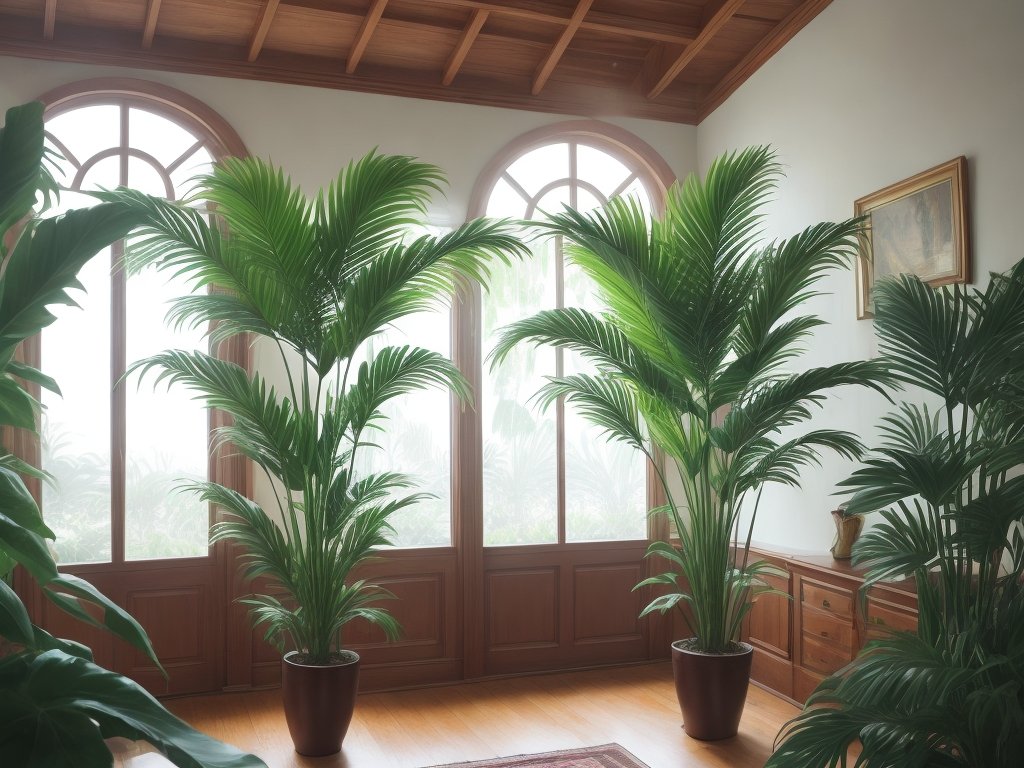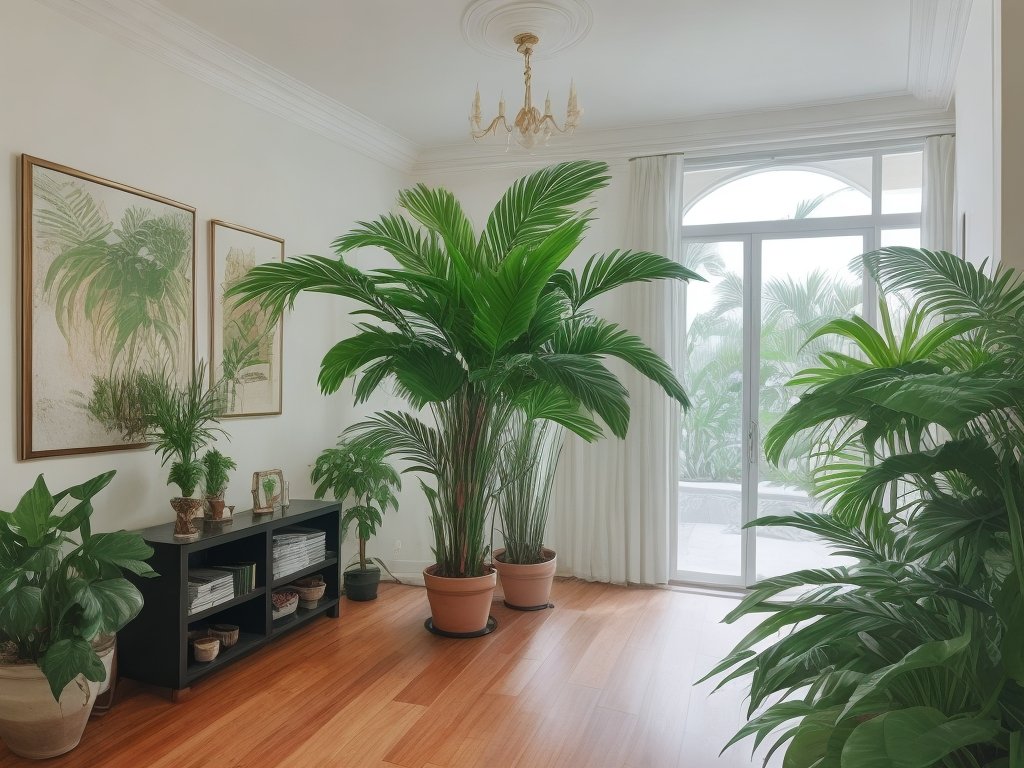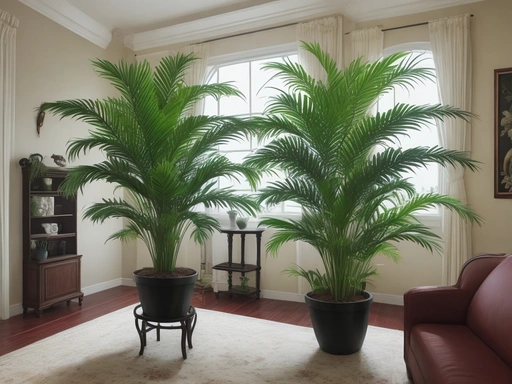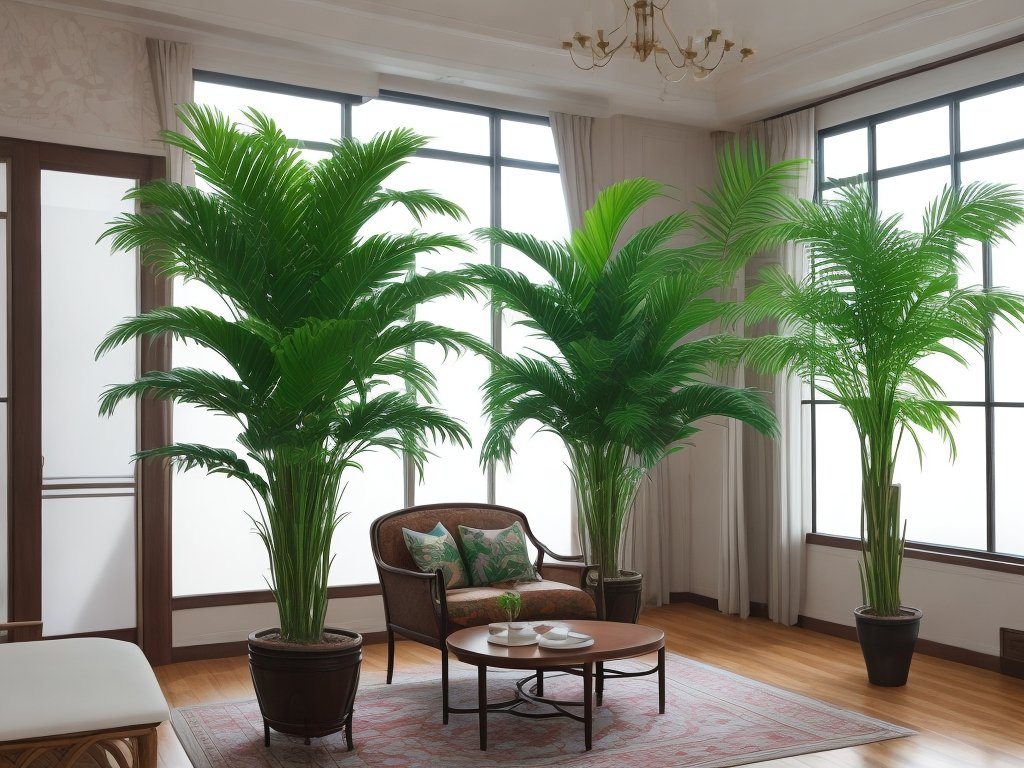Parlor Palm In Small Spaces: Lush Greenery for Any Home
Key Takeaways:
- Parlor palms are ideal for small spaces due to their compact size and ability to thrive indoors.
- They require minimal care, making them a low-maintenance choice for those with limited space or time.
- Parlor palms can improve indoor air quality by removing toxins and adding moisture.
- They add a touch of greenery and natural beauty to any small space, creating a calming and inviting atmosphere.
Looking to bring some greenery into your cramped apartment or tiny office space?
Look no further than the parlor palm! This little plant packs a big punch when it comes to benefits for small spaces.
Not only does it purify the air and require minimal maintenance, but it also adds a touch of natural beauty to any setting.
But how do you choose the right parlor palm for your space and care for it properly?
And where should you place it to make the most impact?
In this article, we’ll explore all these questions and more, giving you the ultimate guide to enjoying the parlor palm in small spaces.
So grab your green thumb, and let’s get started!
Benefits of Parlor Palm in Small Spaces
The Parlor Palm is a great choice for small spaces due to its air purification abilities, low maintenance requirements, and aesthetic appeal.
Air Purification
Parlor palm is a great choice for improving air quality in small spaces.
- It is known to filter and purify indoor air by removing harmful toxins and pollutants.
- The plant helps to release oxygen and absorbs carbon dioxide, creating a healthier environment.
- Its ability to remove formaldehyde, benzene, and other chemicals make it an excellent natural air purifier.

Low Maintenance
Low maintenance is one of the key advantages of having a parlor palm in a small space.
These plants require minimal care and attention, making them perfect for busy individuals or those with limited gardening experience.
Here are a few reasons why parlor palms are low maintenance:
- Watering: Parlor palms prefer slightly moist soil but can tolerate occasional dryness. They can survive with infrequent watering, typically once every 1-2 weeks.
- Fertilizing: Parlor palms do not require frequent fertilizing. A slow-release fertilizer applied once or twice a year during the growing season is usually sufficient.
- Pruning: Parlor palms have a slow growth rate and do not require frequent pruning. Simply trim away any yellow or brown leaves to maintain its overall appearance.
- Repotting: Parlor palms do not need to be repotted often. They prefer to be slightly root-bound, so repotting every 2-3 years is generally enough.
- Pest control: Parlor palms are relatively resistant to pests. However, they can occasionally attract spider mites or mealybugs. Regularly inspecting the leaves and taking prompt action if pests are detected can help keep them healthy.
Overall, parlor palms are a great choice for those looking for low maintenance plants that can thrive in small spaces.
With minimal effort, you can enjoy the beauty and benefits of these lovely palms without much hassle.

Aesthetic Appeal
The parlor palm is a beautiful plant that brings a touch of nature and greenery to any small space.
Its elegant, feathery fronds and compact size make it a visually appealing addition to any room.
Whether placed on a shelf, countertop, or desk, the parlor palm adds a fresh and vibrant look to your home or office.
Plus, its lush foliage can create a calming and relaxing atmosphere, making it the perfect decorative accent for any small space.

Choosing the Right Parlor Palm for Small Spaces
When choosing a parlor palm for small spaces, consider its size and growth rate.
Additionally, pay attention to the plant’s light requirements, temperature and humidity needs.
Size and Growth Rate
The size of a Parlor Palm can vary, but they typically reach a height of 2 to 6 feet when grown indoors.
As for the growth rate, Parlor Palms are considered slow growers, with an average increase of about 1 to 2 inches per year.
Keep this in mind when choosing a space for your Parlor Palm to ensure it has enough room to thrive.
Light Requirements
Parlor palms thrive in bright, indirect light.
Place them near a north- or east-facing window for optimal growth.
Avoid direct sunlight, as it can scorch the leaves.
If your space lacks natural light, consider using artificial grow lights to provide sufficient light.
Remember to rotate the plant occasionally to ensure even growth.

Temperature and Humidity Needs
Parlor palms thrive in average to warm room temperatures, ideally between 65-75°F (18-24°C).
They can tolerate slightly cooler temperatures, but avoid placing them in drafty areas or near cold windows.
In terms of humidity, these plants prefer moderate to high levels.
Use a humidifier or mist the leaves regularly to maintain optimal humidity.
Avoid placing them near vents or heaters that can create dry air.
Caring for Parlor Palm in Small Spaces
Caring for a Parlor Palm in a small space requires attention to watering, fertilizing, pruning, repotting, and pest control.
Watering
Water your Parlor Palm thoroughly once the top inch of soil feels dry.
Make sure the water drains out of the pot completely and never let the plant sit in standing water.
Remember to adjust the watering frequency based on temperature and humidity levels to avoid overwatering or underwatering.
Fertilizing
Fertilizing is important for the health and growth of your parlor palm. Use a balanced liquid fertilizer once a month during the spring and summer.
Dilute the fertilizer according to the instructions and apply it to the soil.
Avoid over-fertilizing, as it can damage the plant.
Pruning
Pruning is an important aspect of caring for your parlor palm in small spaces. It involves removing dead or yellowing leaves to promote new growth and keep the plant looking tidy.
Use clean, sharp scissors or pruning shears to make clean cuts close to the base of the leaf stem.
Avoid cutting into the main stem or removing too many leaves at once. Regular pruning will help your parlor palm stay healthy and maintain its desired shape.
Repotting
Repotting your parlor palm is an important task to keep it healthy and thriving in a small space.
Here’s what you need to know:
- Repot your parlor palm every 2-3 years to ensure enough space for its roots to grow.
- Choose a slightly larger pot with drainage holes to prevent waterlogging.
- Use a well-draining potting mix to promote healthy root growth.
- Gently remove the palm from its current pot, being careful not to damage the roots.
- Place the palm in the new pot, ensuring that it sits at the same depth as before.
- Fill the gaps with fresh potting mix, lightly pressing it down.
- Water the palm thoroughly and place it in a suitable spot with the right lighting and temperature conditions.
Pest Control
Pest control for Parlor Palms involves keeping an eye out for common pests like spider mites, mealybugs, and scale insects.
Regularly inspect your plant for any signs of infestation, such as webbing, sticky residue, or tiny insects.
If you notice any pests, you can use a gentle insecticidal soap or neem oil spray to eliminate them.
Additionally, maintaining a clean and dust-free environment around your plant can help prevent pests from taking hold.
Placement Ideas for Parlor Palm in Small Spaces
If you have a small space, consider hanging baskets or miniature terrariums for your Parlor Palm. Shelves, countertops, and desktops can also be great options.
Hanging Baskets
Hanging baskets are a great option for small spaces when it comes to displaying your parlor palm.
They add visual interest and make use of vertical space.
Make sure to choose a sturdy basket and use well-draining soil.
Hang them near a window to provide adequate sunlight.
Watering and maintenance are key to keeping your parlor palm healthy in a hanging basket.
Miniature Terrariums
Miniature terrariums are small, enclosed ecosystems that can be a charming addition to any small space.
They are easy to care for and require minimal maintenance.
To create a miniature terrarium, you’ll need a glass container, small plants, soil, and decorative elements like rocks or moss.
The closed environment helps to create a self-sustaining ecosystem, making it a great option for those with limited space.
Plus, they add a touch of greenery and visual appeal to any room or desk.
Shelves and Countertops
Shelves and countertops can be great locations to place your parlor palm in small spaces. They provide a stable and elevated platform for the plant, allowing it to receive adequate light and be displayed prominently.
Just make sure the shelves or countertops are sturdy enough to hold the weight of the pot.
Additionally, placing a tray or saucer underneath the pot can help catch any excess water and protect the surface.
Desktops and Office Spaces
Desktops and office spaces can be great locations for placing Parlor Palms. These compact plants thrive indoors and add a touch of greenery to any workspace.
Just make sure they have access to bright, indirect light and maintain consistent temperature and humidity levels.
Regular watering, occasional fertilizing, and monitoring for pests are also important for their care.
Frequently Asked Questions about Parlor Palm in Small Spaces
Can Parlor Palm survive in low light conditions?
Yes, Parlor Palms can survive in low light conditions.
They are actually very adaptable and can tolerate lower light levels compared to other plants.
It’s one of the reasons why they are popular choices for indoor spaces, including small spaces with limited natural light.
However, it’s important to note that they still need some indirect light to thrive.
If the light is too low, they may grow slower or become leggy.
So while they can survive in low light conditions, it’s best to provide them with as much indirect light as possible to keep them healthy and vibrant.
How often should I water my Parlor Palm?
Water your Parlor Palm thoroughly when the top inch of soil feels dry to the touch.
This usually happens every 1-2 weeks, but it’s important to check the soil regularly as different environmental factors can affect the watering frequency.
Remember not to overwater, as this can lead to root rot.
Will Parlor Palm tolerate dry air in small spaces?
Yes, Parlor Palms can tolerate dry air in small spaces.
They are known for their resilience and ability to adapt to various environmental conditions.
While they prefer moist environments, they can still thrive in drier air as long as they receive adequate watering and humidity.
Consider misting the leaves or using a humidifier to create a more suitable environment for your Parlor Palm in dry spaces.
Can I keep my Parlor Palm in the bathroom?
Yes, you can definitely keep your Parlor Palm in the bathroom! The bathroom can often have the right conditions for this plant, including low to moderate light and high humidity levels. Just make sure it still gets some indirect light and water it regularly to keep it healthy and thriving.
Final Verdict
The parlor palm is an excellent choice for small spaces due to its numerous benefits. Not only does it improve air quality by purifying the air, but it also requires minimal maintenance.
Its aesthetic appeal adds a touch of greenery and beauty to any space.
When choosing a parlor palm, consider its size, growth rate, light requirements, and temperature needs. Proper care includes regular watering, fertilizing, pruning, repotting, and pest control.
Placement ideas include hanging baskets, miniature terrariums, shelves, countertops, and desktops.
And finally, for frequently asked questions, the parlor palm can survive in low light conditions, requires regular watering, tolerates dry air, and can be kept in the bathroom. In summary, the parlor palm is a versatile and resilient plant that brings life to small spaces while requiring little effort to maintain.







